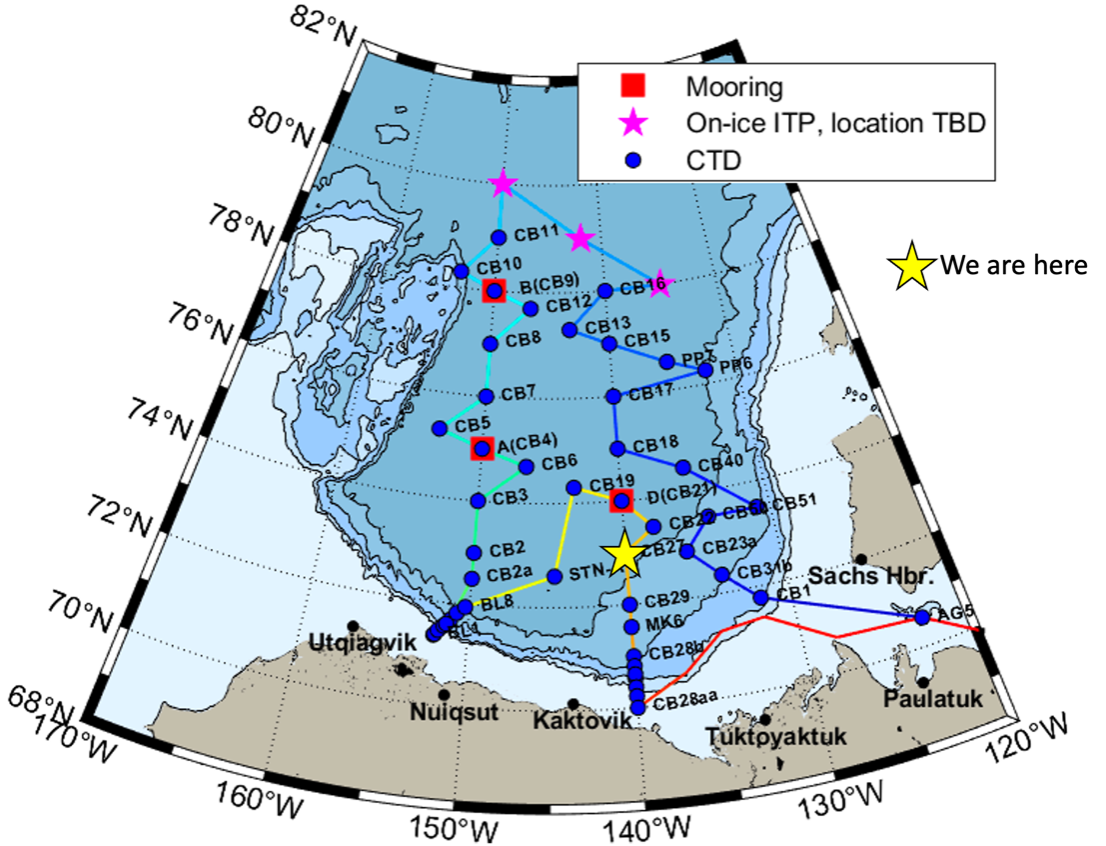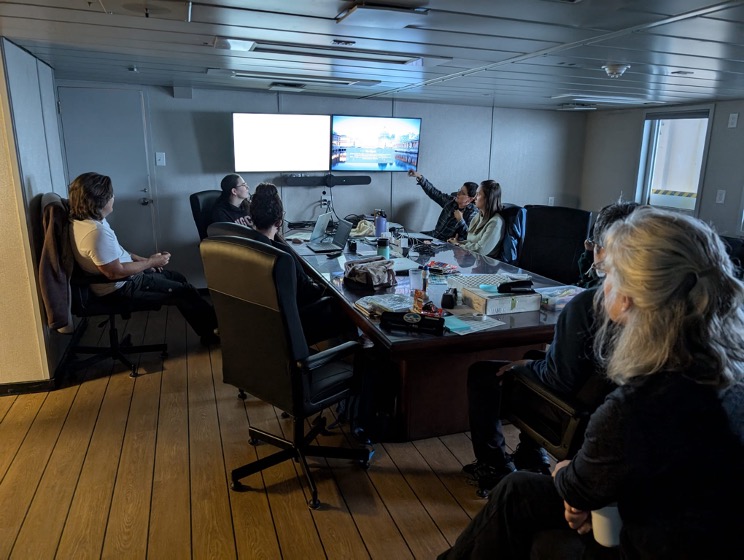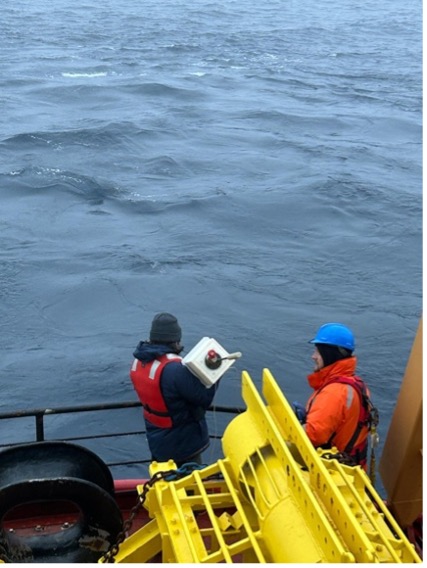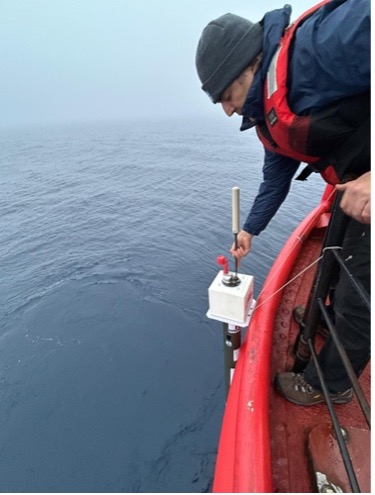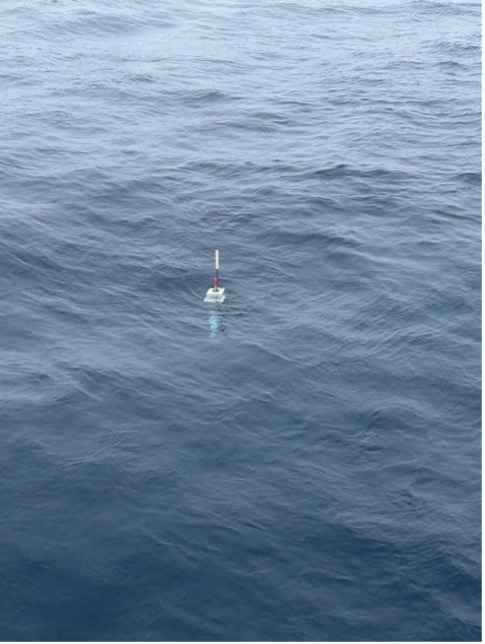Dispatch 20: CTD casts and Argo Floats
Ashley Arroyo (Yale University)
September 18, 2024
23:50 UTC, 73°N 140°W
Conditions:
- Foggy
- 0% sea ice cover
- 7°C
- Winds 13.5 knots northwesterly
- Sunrise: 18-Sep-2024 08:38:21 -06
- Sunset: 18-Sep-2024 21:52:17 -06
Early this morning, the Louis arrived at Station-A, where the nighttime watch-standers completed CTD/bongo casts, and water sampling. After the casts at Station-A were completed, Chief Scientist Paul Macoun and technician Seth Fleming-Alho deployed an Argo float off the ship’s stern. Argo floats are buoyancy-driven instruments that sample the water column for temperature, salinity, and pressure. In contrast to the buoys that we typically deploy in the Arctic Ocean (e.g., Ice-Tethered Profilers and Tethered-Ocean Profilers), Argo floats spend most of their time entirely underwater- therefore, they can only transmit data when they reach the ocean’s surface, which is roughly every 10 days. Historically, not many Argo floats have been deployed in the Arctic Ocean because the sea ice inhibits the float from surfacing and transmitting data for long stretches of time. However, in recent years more Argo deployments in this region are testing their effectiveness. We hope to receive some promising data from the float soon!
Once the Argo float deployment was complete, the Louis steamed east at ~10 knots toward station CB-27. Before lunch, the science team had a meeting where we discussed the plan for the upcoming 48 hours. At the meeting, PhD student Magali Pucet from the University of Sherbrooke in Quebec, Canada presented on some of her dissertation research which focuses on the spatial distribution of organic matter in the Arctic Ocean using samples collected from the 2023 BGOS/JOIS expedition.
We arrived at CB-27 after supper, where we completed a set of CTD/bongo casts and water sampling. After the rosette was back on deck, Paul and Seth deployed another Argo float off the ship’s stern. The Louis is now steaming north to the site of BGOS Mooring D, where we will begin its recovery in the morning.
